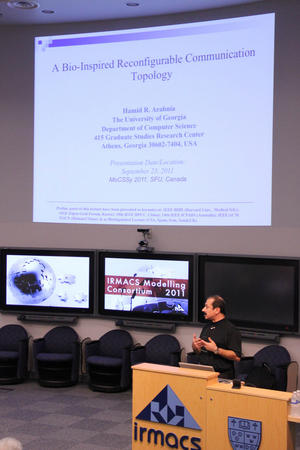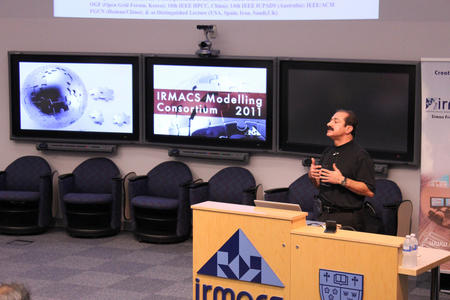A Bio-inspired Reconfigurable Communication Topology
Inherent limitations on the computational power of sequential uniprocessor systems have lead to the development of parallel multiprocessor systems. The two major issues in the formulation and design of parallel multiprocessor systems are algorithm design and architecture design. The parallel multiprocessor systems should be so designed so as to facilitate the design and implementation of the efficient parallel algorithms that exploit optimally the capabilities of the system. From an architectural point of view, the system should have low hardware complexity, be capable of being built of components that can be easily replicated, should exhibit desirable cost-performance characteristics, be cost effective and exhibit good scalability in terms of hardware complexity and cost with increasing problem size. In distributed memory multiprocessor systems, the processing elements can be considered to be nodes that are connected together via an interconnection network. In order to facilitate algorithm and architecture design, we require that the interconnection network have a low diameter, the system be symmetric and each node in the system have low degree of connectivity. Further, it is also desirable that the system configuration and behavior be amenable to a suitable and tractable mathematical description. The requirement of network symmetry ensures that each node in the network is identical to any other, thereby greatly reducing the architecture and algorithm design effort. For most symmetric network topologies, however, the requirements of low degree of connectivity for each node and low network diameter are often conflicting. Low network diameter often entails that each node in the network have a high degree of connectivity resulting in a drastic increase in the number of inter-processor connection links. A low degree of connectivity on the other hand, results in a high network diameter which in turn results in high inter-processor communication overhead and reduced efficiency of parallelism. Reconfigurable networks attempt to address this tradeoff. In a reconfigurable network each node has a fixed degree of connectivity irrespective of the network size. The network diameter is restricted by allowing the network to reconfigure itself into different configurations. In general, a reconfigurable system needs to satisfy the following criteria in order to be considered practically viable: (a) In each configuration the nodes in the network should have a fixed degree of active connectivity irrespective of network size, (b) The network diameter should be kept low via the reconfiguration mechanism and (c) The hardware for the reconfiguration mechanism (i.e. switch) should be of reasonable complexity. In this presentation, we discuss our design of a reconfigurable network topology that is targeted at medical applications; however, others have found a number of interesting properties about the network that makes it ideal for applications in computational biology as well as information engineering. We present some results and discuss our ongoing work in this area; we will also present a particular variation to our original reconfigurable network which is nature/biology inspired.
Multimedia


